TORSO
Directed by Sergio Martino. 1973. Italy.
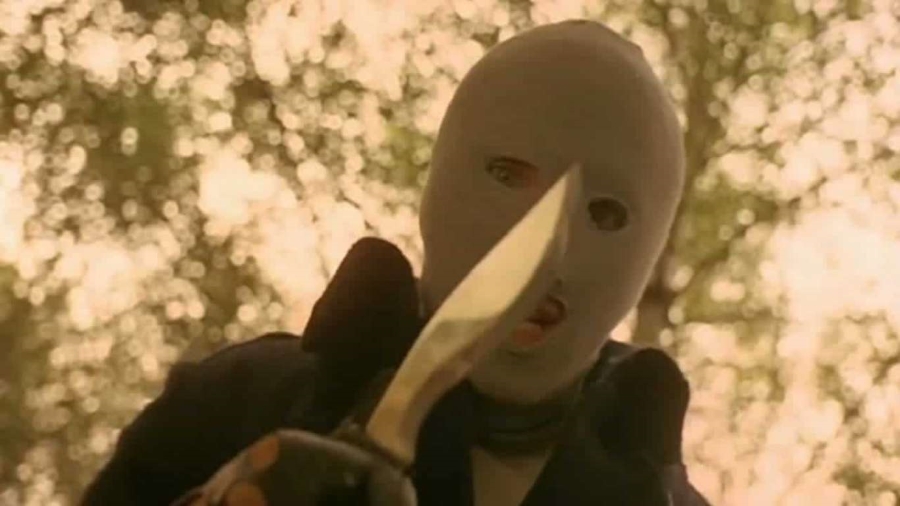
Back when I was a know-nothing teenager renting VHS tapes by the dozen, I saw quite a lot of Dario Argento films. As I had no idea what a giallo was at that time, I thought they were just slasher films. After all, they looked like slasher films, played out like slasher films, were graphically violent like slasher films... You would forgive me for not quite knowing the difference. As my horizons expanded and my ability to purchase bootleg tapes increased, I slowly became more familiar with the giallo film. In one summer, I saw virtually every Martino giallo on grainy bootleg tapes that cost me a whopping 30 dollars a pop. Some of them were in particularly bad shape, none of them uncut and one of them looked like it had been edited with a meat grinder.
Of those films, TORSO stuck out like a sore thumb. It lacked the playfulness of the other Martino gialli, the mystery elements were not as interesting and the whole thing felt somehow wrong like it was more of a slasher film than a giallo. That isn't far from the truth. Watching the film now, my first instinct still feels correct in many ways. TORSO is really a proto-slasher.
I. OF GIALLOS AND SLASHERS
First let's compare the two kinds of films:
The giallo film is usually (1) set in a city or town, (2) takes place over the course of a week or two and (3) is primarily concerned with suspense over terror.
The slasher film is usually (1) set in one or two locations, (2) takes place over the course of a day or two and (3) is primarily concerned with terror over suspense.
Now, when I use the term "terror", I mean that the film's primary impulse is not a slow build-up of suspense but bursts of standard horror violence. In the slasher film, it is common for characters to be completely clueless about the killer's presence. In the usual slasher set-piece, the characters wander directly into the path of the killer, a brief chase ensues and the whole set-piece wraps up with the character's violent demise. This is not the typical giallo way of doing things. The characters in a giallo are usually very much aware that a killer is lurking in their city or town and they are quite often well aware they have been targeted. The giallo film operates by focusing on the "when" while the slasher film operates almost completely by focusing on the "how”.
II. THE PAWNS
A quick look at TORSO reveals another similarity between it and the standard slasher film: the character selection. The main characters in TORSO are all college-age, mostly sexually promiscuous girls. This differs from the standard giallo which usually focuses on adult characters, career men and women, who are engaged in fucked-up relationships or are saddled with baggage from past broken relationships or trauma of some sort. The main character in the giallo film is usually a foreigner who has wandered into the middle of a murder spree and begins to play an active role in the unraveling of the mystery. In comparison, the main character in the slasher film is usually a virginal young woman with little in the way of emotional depth that is put in danger simply because she is in the wrong place at the wrong time. While the giallo contains characters that are self-aware, conscious of the threat at hand and proactive in their attempt at survival, the slasher film's characters are clueless, easily shaken and utterly devoid of anything except base instincts like sex and survival. In short, one features characters, the other simple caricatures.
TORSO uses its main characters as little more than sexual objects. The character of Jane best represents the "Final Girl" in TORSO, the figure of pride and virtue in the slasher film that manages to overcome the killer and survive to the sequel. She is the only character that is given any real sense of personality and wit. The men in the film are all represented as lecherous, macho weirdos obsessed with sex and domination. The only male character who escapes this representation is a doctor named Roberto but even he is given a certain predatory feel. On this level, TORSO feels distinctly more slasher than giallo.
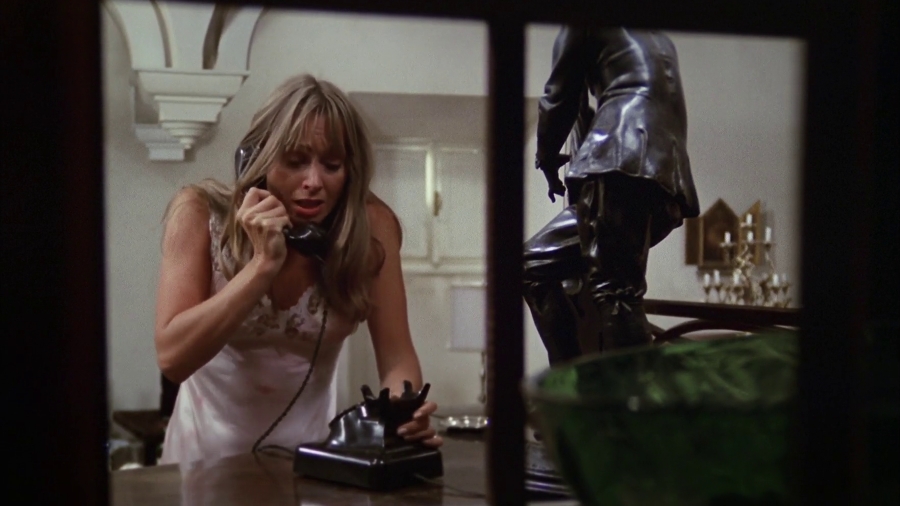
TORSO does one thing differently, however. It splits the typical Final Girl into two distinct characters. Daniela has the soft-spoken, repressed air about her. She is obviously the damsel in distress kind of girl, a woman that cries out for help when faced with the slightest bit of stress. She is constantly harassed by Stefano, a fellow student that has known her since childhood and is clearly obsessed with her but does little to discourage Stefano's creepy attempts to possess her. Jane, on the other hand, is tougher, more assertive and abrasive. She has no problem questioning male authority and even travels to Stefano's apartment to tell him what's what. It's amusing to watch TORSO with an audience today, especially with people who have never seen it before. If this were an American slasher film, Daniela would have been the heroine but because this is a giallo film, Jane, the foreigner, comes out victorious while Daniela exits the narrative in a way that totally confuses and shocks our expectations.
III. THE PLOT
For those of you who haven't seen the film - and I strongly recommend you do so before continuing as I'll be spoiling everything - the plot of TORSO is as follows: The film opens with a threesome between two girls - one of which is unidentified - and an unknown male. After a brief dialogue scene at the college - during which we meet our two main characters, Daniela and Jane - we immediately jump to a sex scene and a double murder - the leering POV shots used here will be instantly recognizable to fans of the slasher film. The killer's method of murder is of importance here. He strangles the young woman with a red and black colored scarf before mutilating her with a blade. We recognize that the murderer is the man who was engaged in the opening threesome for two reasons. The first being that the woman he has just killed was the only participant in the threesome that we could identify and the second being that, as the murder is being committed, we are shown a doll having its eyes gouged out, another sight we are shown during the opening tryst.
The remaining group of girls - Daniela, Jane, Carol and their two lesbian friends, Ursula and Katia - receive news of the murder. Carol panics and decides to hook up with two boys after her older paramore leaves her. The boys take her to an old, abandoned building that now acts as a hippy hangout. After being molested by the two boys, Carol burns one with a joint and takes off, walking through a nearby marsh in a pot-induced haze. Soon enough, she is assaulted by the killer, strangled and mutilated. The police arrive at the school the next day and inform the students that they have identified the murder weapon - the red and black scarf the killer wears around his neck. Daniela immediately recognizes the scarf and believes that her obsessive stalker Stefano was wearing the scarf the day Carol was murdered. She later receives a phone call from the killer warning her not to talk to the police.
In order to escape the madness, the girls decide to go a country villa owned by Daniela's uncle. Daniela, Ursula and Katia travel by train to the villa while Jane travels by car later on that day. It is soon apparent that the murderer has followed them and, in one of the best shocks the film has to offer, kills the lot of them in a single night. Jane, hopped up on pain killers given to her by Roberto the doctor - who we have seen not only at their college but also on their train - after spraining her ankle, had slept through the whole bloody affair and she wakes up the next morning to find all her friends dead. As she hides in the house, the killer - unaware that Jane had arrived separately from the girls - cuts her friends up into pieces with a hacksaw, burying the bodies behind the house. After finishing, the killer leaves with Jane locked in an upstairs bedroom. While in the city, the still unknown killer overhears a few local boys talking about the four beautiful ladies living up in the villa. Realizing his mistake, the killer immediately returns to the villa to finish the job.
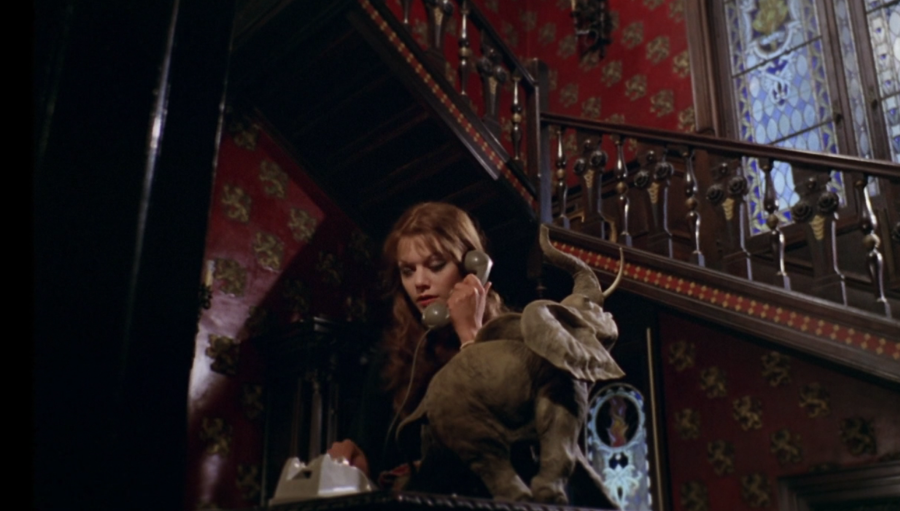
The brief wrap-up that follows reveals the killer to be a teacher at the art school named Franz - a character set up as a love interest for Jane, no less. He explains that when he was a child, he and his brother tried to coax a girl into showing them her privates. She agreed as long as they got her doll for her. Unfortunately, the doll is resting at the precipice of a cliff and Franz's brother falls to his death. This event - coupled with the fact that Katia and Carol seduced him into having a threesome, the same one we witnessed at the film's beginning, in order to blackmail him using photographs of the sexual encounter - led him to kill all the girls, which he viewed only as "dolls". Daniela had to die because she may have recognized the scarf he was wearing at school. Ursula and Katia were merely collateral damage. A quick struggle ensues between Jane and Franz but Roberto arrives and manages, after an outdoors scuffle, to throw the killer off a cliff.
IV. THE GORY DETAILS - MURDER SET-PIECES AND SETTING
Where TORSO most closely resembles a slasher film is in its set-pieces and ending. In TORSO, Martino's set-pieces are quick, dirty and brutal. The killing of Carol in particular is an amazingly chilling piece of film. As Carol strolls lazily through the marsh, the fog around her begins to build. She notices a man watching her from a distance. A crow flies through the sky, startling her. When she looks back, the man is gone. He appears from behind her and she begins to run. Carol trips and falls, crawling through the mud - another slasher cliche born, the woman in peril who can't stand on her own two feet. The killer loops the scarf around her neck and forces her head into a puddle of muddy water. After she is dead, he caresses her breasts before, in close-up, gouging out her eyes.
This mix of sex and violence was the giallo film's stock and trade in the 70s. Martino himself could be seen as one of the main innovators - if that word is proper here - of that particular form. His early giallo, THE STRANGE VICE OF MRS WARDH, was one of the first to marry deviant sexuality with graphic violence. The success of that film quickly led to a slew of films that pushed the giallo into rougher, sexier turf. However, it is important to note that after Carol's murder, these elements disappear altogether and TORSO slides into peepshow mode, with long shots of the ladies swimming nude, sunbathing nude and, in the film's most voyeuristic moment, making love together.
Looking at this film with the eyes of a slasher film fan, all of these elements seem familiar but Martino's chronology is a bit mixed up. In a slasher film, we would start with harmless nudity before sliding into sex and murder. It's a bit disarming at first to find that the front end of TORSO is loaded with sex and violence while the remaining two-thirds of the film are virtually bloodless and tame.
The move from the city to the country places us firmly in slasher territory. The country villa is several miles away from the city. It contains a single phone line - cut by the killer during the final night - and is completely isolated from the outside world. The slasher film chooses this type of location solely for the purpose of increasing t he odds of interaction between the killer and his victim while decreasing the odds of outside intervention. If there is no one around to help the victims, there is no unnecessary complication of the narrative. Martino's decision to kill off three of the four main characters in a single blow is unusual - of all the slasher films I've seen only THE BURNING attempts this trick successfully - but it is necessary to get us to the final chase and the resolution of the plot.
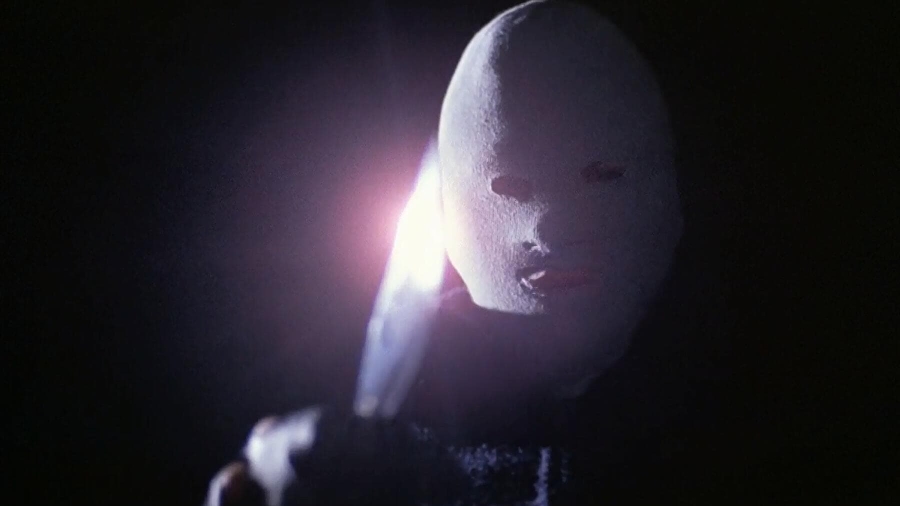
The final chase scene is something every slasher movie contains. It's the moment where the Final Girl realizes that there is a murderer skulking around, finds her dead friends, meets the killer face-to-face and takes off running, trying to avoid the maniac until she can deliver the final blow to the killer and make her escape. TORSO plays this out in a unique way. For starters, this final chase scene isn't really a chase scene. It's a game of avoidance. Jane hobbles down the stairs and sees her friends dead. When the killer returns with a hacksaw, Jane hides behind a door and watches him slowly cut up her friends one by one - Martino, in an amazing show of restraint and creativity, avoids the usual graphic gore here, using the camera and careful framing to remove limbs instead of using gory special effects. When the killer goes out to dispose of the first bag of body parts, Jane makes her way upstairs, dropping her slippers on the steps in the process. The killer returns and finds the slippers. He immediately searches the room where Jane has been staying but finds it empty - Jane had already hurriedly thrown all her belongings into the closet. He leaves and locks the door, leaving the key in the lock. Jane emerges from the closet and watches him carry out the rest of the bodies.
The tension in this scene is incredible. It is really nerve-wracking stuff. The slasher film presents its final scene in a rush with the Final Girl bolting from one location to another, blocking doors, unblocking doors, and sprinting full bore all over the place. Martino keeps everything tense without being busy. This entire sequence is played out without a single line of dialogue or note of music. It creates its tension simply and effectively by using simple cuts and careful camera placement. However, unlike the typical slasher film, a man is needed to vanquish the killer in TORSO. Jane doesn't even get a lick in. Women in the giallo film could be many things - stern, feisty, brave, strong, resourceful - but when it got down to it, the only thing that could stop the killer was a big, strong man.
V. IN THE SHADOW OF THE SLASHER
Many of these plot elements (and indeed whole sequences) were appropriated by the slasher film and the sub-genre really does owe a major debt of gratitude to the giallo film. It's surprising that the giallo hasn't quite received the popular acceptance that the slasher film has here in America, especially the gialli which came after TORSO. They are incredibly similar. Several slasher films operate more like American and Canadian gialli than true blue slashers - I'm thinking TERROR TRAIN, NIGHT SCHOOL, SCREAM, MY BLOODY VALENTINE, FRIDAY THE 13TH - and it seems strange that the giallo film is still skirting the fine line between obscurity and popular acceptance while slasher films are, were and probably always will be major money makers and audience favorites.
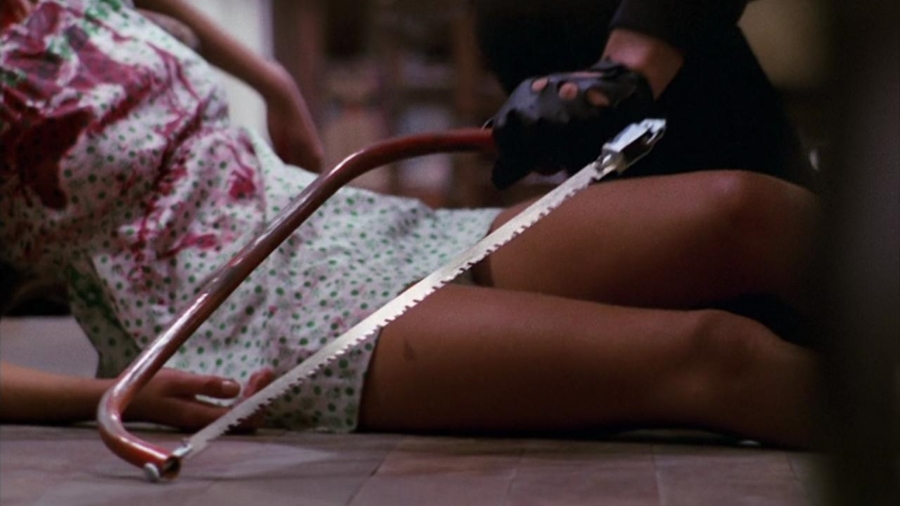
Trying to tie down the reason for this has been somewhat difficult. I have yet to get a solid grasp on the answer. Slasher films provide an audience with a specific kind of viewing experience. They are no frills, no thought required exercises in voyeurism and sadism. Recently, the term "torture porn" was unceremoniously dumped into the lexicon of film criticism. Roughly meaning "a film that features scenes of torture as its main audience draw and selling point", the validity of the term is still hotly contested by horror fans and critics everywhere. I find the term to be not only fitting but also incredibly useful. In fact, I would be fine in referring to slasher films as "blood pornography". Anyone who denies the fact that the main draw of the slasher film is the wanton destruction of young, supple flesh clearly has buried their head in the sand. Graphic murders of nude, semi-nude or recently-nude teenagers were big business precisely because audiences craved that sort of thing. The slasher film offered it up in abundance.
So why haven't films like TORSO entered the public consciousness? Why aren't gialli as well-known or as well-loved as films like FRIDAY THE 13TH when they both present roughly the same kind of experience? Damned if I know.
My first impulse is to cry "narrative". While the slasher film is routine and predictable, the giallo is a kind of film you actually have to pay some measure of attention to. There's a mystery to be solved, characters are coming and going, red herrings are everywhere and there's a mountain of clues to sort through. They're not passive movie going experiences. Some might be more involving than others but, at the end of the day, there is no such thing as a giallo you can walk away from for a half hour and come back to without missing a beat. I can't imagine these kinds of films playing in grindhouses or drive-ins - though they definitely did - as I simply cannot imagine anybody being able to follow a giallo film with any sort of constant or major interruption.
A simple experiment: Grab a friend. Any friend. Put on a giallo film that your friend hasn't seen. A half hour in, have him leave the room for ten minutes. When he comes back, ask him if he can figure out what's going on. Chances are, he'll be confused. Now put on a slasher film and repeat the above experiment. Chances are, he'll have no problem in figuring out what he missed. The reason is simple. Giallo films have full plots while slasher films have very little. For someone who wants just a few tit shots and a flood of fake blood, slasher films are the better choice. I can't help but feel that narrative simplicity plays a large part in why slasher films are so popular while their Italian cousins - pound for blood-soaked pound, better pictures - are not.
VI. SIZING UP TORSO
TORSO is a giallo classic. It may not have the same kind of beauty that THE BIRD WITH THE CRYSTAL PLUMAGE has or the narrative and thematic complexity of Martino's own YOUR VICE IS A LOCKED ROOM AND ONLY I HAVE THE KEY but it succeeds in doing everything it sets out to do with minimal fuss and bother. The mystery elements of the film, however, are somewhat routine and disappointing. The entire mystery almost feels like a MacGuffin, something there just to push the narrative forward so Martino can bring the film to its amazing end. I honestly don't think this film was meant to be just another entry in the genre. It's too sophisticated in its plotting, playing along with every major note until the final third of the film in which Martino pulls the rug out from under our feet and leaves us, battered and stunned, in bold new territory.

Argento is often called the "master of the giallo". I have to disagree. I don't think there is such a thing but, if there were, my money is on Martino. After DEEP RED, Argento slipped into self-reflexive filmmaking. His new films were more or less retreads of his old films and his giallo filmography seems to consist of nothing but elaborate masturbatory celebrations of his prior successes. Martino, on the other hand, was always pushing his gialli into new territory - THE STRANGE VICE OF MRS WARDH with its depictions of sexual deviancy, THE CASE OF THE SCORPION'S TAIL with its graphic violence, ALL THE COLORS OF THE DARK with its strange mixture of genre elements and YOUR VICE IS A LOCKED ROOM AND ONLY I HAVE THE KEY with its multi-layered narrative that offers up a more modernistic take on what had become by that point routine and trite. Martino was not, by any measure, a better director than Argento but his films are infinitely more interesting.
TORSO lives in that grey area between slasher and giallo and its success depends on your familiarity with the sub-genres. Those unfamiliar with the giallo film will likely be surprised by the film's twists and turns. Those more familiar with the giallo than the slasher will likewise be surprised when the film makes an unexpected 90 degree turn in its final half hour. Part of what makes TORSO so much fun to watch is the way it swerves between the two. For slasher fans who have yet to explore the wonderful world of the Italian giallo film, TORSO may very well prove to be the perfect gateway drug.